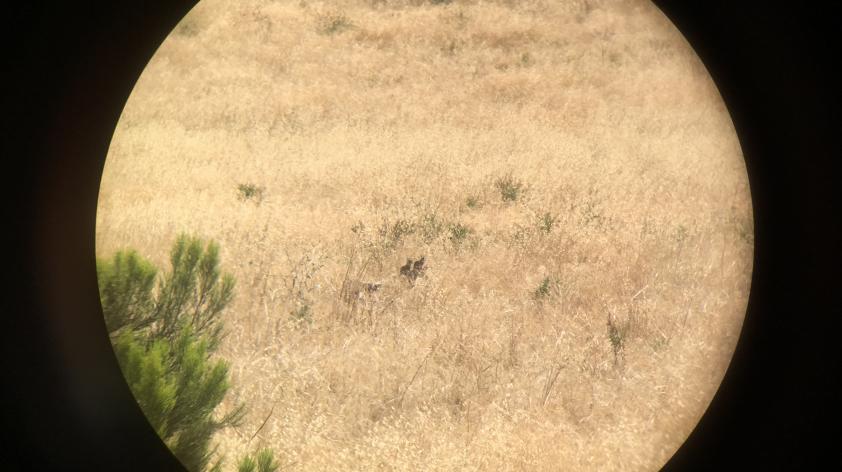
Squirrel!
I saw squirrels! You might wonder why that seems so exciting. In my last blog I described the work we are doing to create California ground squirrel colonies in protected parts of San Diego County for the benefit of burrowing owls. We had just completed surveying the sites for the presence of ground squirrel burrows, and were overjoyed to find evidence of recent activity, from fresh dirt at the burrow entrances to squirrel feces and cut grass found around the burrows.
We followed up our burrow surveys with count surveys at the beginning of June. I went back to the translocation sites with San Diego Zoo volunteer, Sara Alhawi, to assess our populations through observations. We spent three hours each morning, seated quietly at some distance from the plots where we had released squirrels from 2011 to 2013. With binoculars in one hand and a clipboard in the other, we counted the total number of ground squirrels we could see at any one time. Where the grass was thick, this was almost like a visual whack-a-mole game!
At one of our older colonies, established in 2011 and left to fend for themselves since the beginning of 2013, we counted six juveniles. While that number may seem low, visibility was compromised by the tall grasses, so we could only count those that climbed up bushes or logs to stand vigilant against predators. Since all six were juveniles, we presume more siblings were nearby, and adults must have been present but undetected. Overall, while I would have preferred to count more squirrels, we are very pleased that this population continues to survive, six years after the first translocation.
Meanwhile, at two colonies where we released ground squirrels beginning in 2012, we counted thirteen total individuals at one plot, and fifteen at the other. The second plot with fifteen squirrels had much more open habitat thanks to a conservation-based grazing program initiated by the reserve managers to help reduce the biomass of ripgut brome (Bromus diandrus) and other non-native grasses. Thanks to the grazing, Sara was able to see all the adults and juveniles active during her three-hour shift. She also witnessed a predation event – a red-tailed hawk (Buteo jamaicensis) swooped down and captured one of the young squirrels she had been watching. That’s just one of the drawbacks when you work with a prey species. However, this particular site, the Rancho Jamul Ecological Reserve, is also prime nesting habitat for red-tails and other raptors, and the silver lining to this story is that our colonies continue to thrive in the presence of natural predators.
Overall, I’m proud of what we have achieved as a team in this program. Establishing California ground squirrel colonies in non-native grasslands for the purpose of improving biodiversity within a reserve system is a true conservation milestone.













